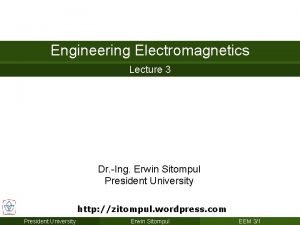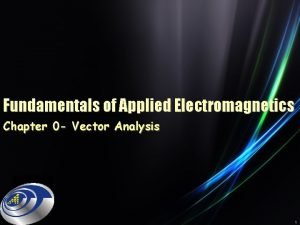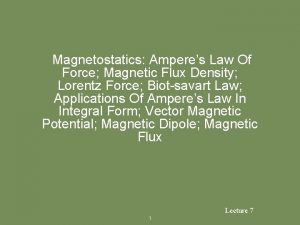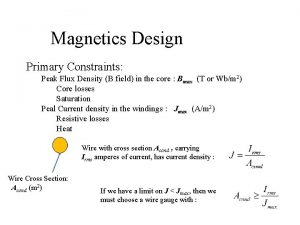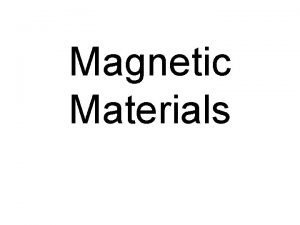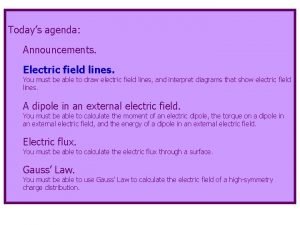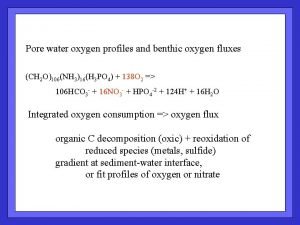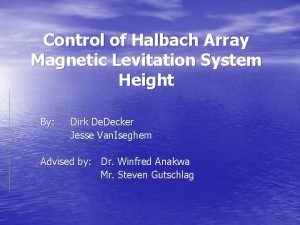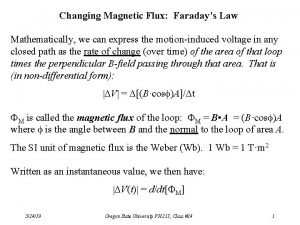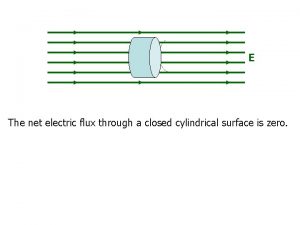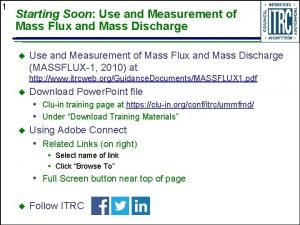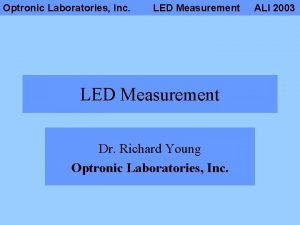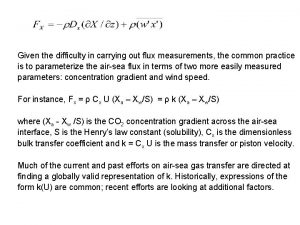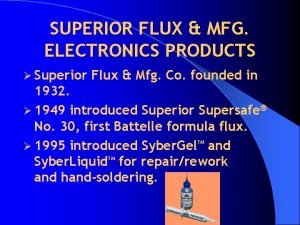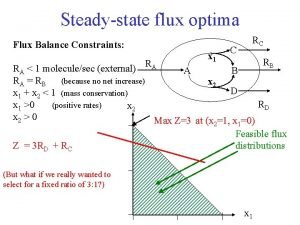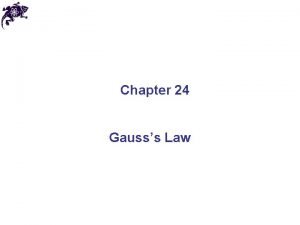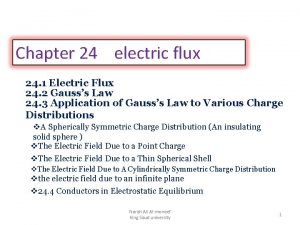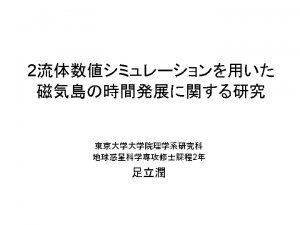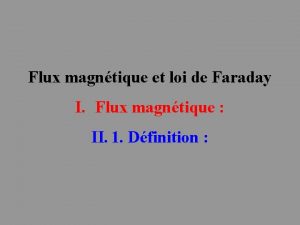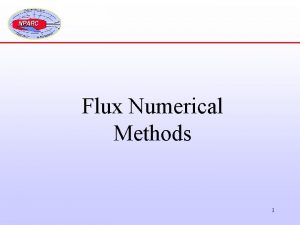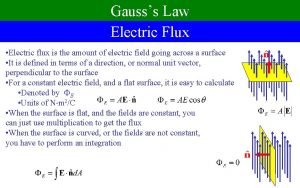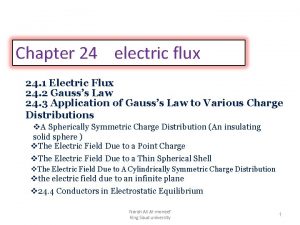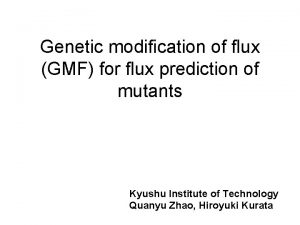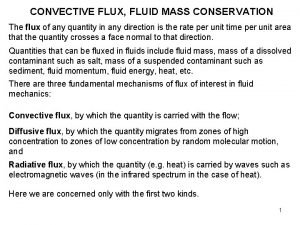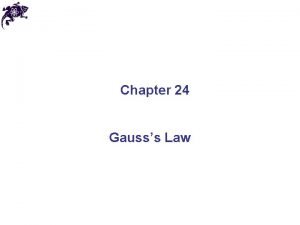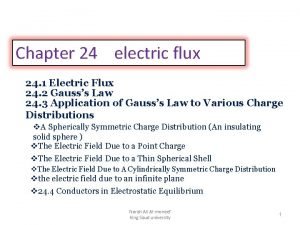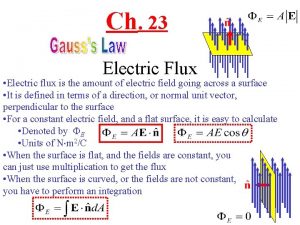Measurement of Flux numu Flux measurement strategy CC





































- Slides: 37

Measurement of Flux

numu Flux measurement • strategy: CC QE exclusive reconstruction in offaxis detector. mu(MIP)+p(highly ionizing) – – non-QE (1 pi)/QE measurement to get purity of sample off-axis, can separate easily pi and kaon contributions reference cross-section “well understood” high efficiency in ND 280 is important in order to minimize systematic error on efficiency • need a quantitative goal for this systematic

forming an error budget • make reference to disappearance measurement – current studies assumed 20% uncertainty in non-QE/QE ratio at super. K – this was roughly equivalent to statistical

predicting far flux at SK • studies exist of how hadron producting impacts far/near ratio – effect is small in peak region (few-5% effect) – effect is larger in high energy tail (non-kaon part) – can we make reference to ORIGINAL hadron production uncertainties from the data? – can we use these studies to set requirements for hadron production EXPERIMENTS?

moving the detector? • technical impact on infrastructure is very large, so we should try to decide soon • another way to view this… moving the detector provides a good cross-check on the far prediction • can we cover “enough” angle by not moving? (detector transverse size) – can build on MC work by Konaka and colleagues

most extreme version: on-axis • is on-axis spectrum measurement useful for near/far ratio? – we know this is not helpful for K/pi for example • also, how do we measure spectrum on axis technically? (measurement, 14 m deeper, etc…) • one counter argument… cross-sections are easier to understand, e. g. QE at high E flat(E) – counter-counter argument. backgrounds are larger to QE measurement

electron neutrino prediction • contributions: pi->mu, K+, K 0 – 1. 0: 0. 8: 0. 2 mu: K+: K 0 in ND (without veto on final state particle). somewhat higher muon contribution in far detector • pi and Ks are well measured off-axis in ND • concerns: – no handle on neutral kaons (get from production experiments only) – concerned about robust pi->mu->nu chain? • accuracy needed is not high. – 10 ev/5 yrs, 20% uncertainty allowed in far detector? ? should do better

electron neutrino measurement in ND 280 • technique : electron+proton final state • what does this measurement constrain? – ND sees a different mix of kaon and muon background – it’s a cross-check rather than a robust prediction, but want much better than 20% in ND • minor concern: we should check calculations of QE cross-section ratio for electron and muon neutrinos – 4% at 500 Me. V, so probably no worries…

anti-neutrinos? • is it important to measure in near detector? – do we plan to ever run anti-neutrinos? don’t want a situation where ND PROHIBITS anti neutrino running – other reasons: some of HE tail is wrong sign. Wrong sign helps to constraint neutral kaons • technically, want to make sure we can add the capability “in a summer shutdown”

predicting backgrounds at SK

non-QE background at SK • this is a SEPARATE issue from measurement of the flux using QE and subtracting backgroun intrinsic to the near detector • here we want to PREDICT the non-QE background at SK using measurements at ND 280

issues for non-QE background at SK • probably need to measure on oxygen since nuclear absorption is different • dominant non-QE background at SK is single pion – measure exclusive final state rates relative to QE rate at ND 280 – differential cross-sections • two types of background. real muons and fake muons – fake muons (e. g. , pions) are probably not a big issue at SK – are they a background to exclusive states at the near detector?

is off-axis detector enough? • do we need to move the detector to vary the spectrum (separate peak region from high energy tail)

what is the role of electron scattering? • in principle, very valuable information about nuclear effects with very high statistics • does it work? • probably need the option at least in reserve to have an oxygen rich ND 280 part

pi 0 background at super. K • similar comments about carbon/oxygen difference • 2/3 of background at super. K is resonant single pion – coherent production is estimated ~15%, but essentially unknown

a coherent program… • • can measure in CC and NC both in fully active detector, can measure in carbon what does that tell us about oxygen? there will at least be upper limits from K 2 K 1 k. T data • even CC coherent is a challenge to the detector. NC coherent is a very hard final state • it is enough to have CC in oxygen and carbon plus NC in carbon

resonance pi 0 • need total and differential cross-sections • does NC pi 0 resonant production require a variety of beam energies to do correctly? • CC allows you to deconvolute and CC can feed models of NC(Energy) • also, we need to temper severe requirements here with the knowledge that it can be measured directly at super. K. – are there ND measurements that help reduce these systematics? such as backgrounds to pi 0 at SK

search for single gamma • in principle, there are direct single photons – through radiative effects any contribution from coherent nucleus? – Δ Nγ • merits theoretical and experimental? study – probably are existing limits from old experiments on this process

detector discussion

muon monitor

thoughts on muon monitor • position well established – need sensitivity to >~5 Ge. V muons • fluence (10^8 mu/spill/cm^2) requirements limit detector technology • Nakaya: “choose technology that is not too exotic” – ionization chamber for example (get input from MINOS) • Konaka: “diamond detector” – we should begin R&D here. beam tests at TRIUMF, K 2 K • can we afford only one detector technology? – what if one fails? • homework for Jan. : conceptual design and cost est. – TRIUMF/UK(? ) for diamond; Kyoto/KEK for I. C.

on axis 280 m detector

opening thoughts on on-axis 280 m detector • physics need not as well established as other detectors – how is it not redundant with muon monitor? – how is it not redundant with 280 m off axis? • Some ideas: – position of neutrino beam (independent of muons) – is high rate important during commissioning for establishing neutrino beam? (first check) – important to measure the spectrum for checking pion spectrum? (for example, Konaka matrix argument) • Need to understand soon – digging deep requires ¥ ¥ ¥ (building cost ~ volume)

more comments • neutrino position measurement is important for sensitivity to low energy pions – so need to identify low energy neutrinos • detector could be extremely simple – need to select energy; need to preserve rate in order to make day-by-day measurements of beam – can there be a simple structure to house it? – is it worth working very hard to try to be clever and save money, or does it cost most to be clever in the end? • how complicated a detector would be needed to implement the on-axis matrix method?

homework for on-axis detector • Ichikawa’s detector is costed – grid detector covering large area • should we cost a large area detector? – scaling from OPERA (magnetized) MRD? • anyone to study a more “sparse” design? • need more complete understanding of building costs with these design concepts in mind – i. e. , for monolithic large detector, is there a floor load problem? • Konaka will study matrix method and which detector positions are needed

off-axis 280 m detector

opening thoughts on off-axis 280 m • physics need is crucial (yesterday’s discussion) – flux and neutrino interaction background – how will role change when 2 km is present? • many detector concepts – – – integrated nuclear targets vs localized “external targets” how can oxygen rich targets be made active? gamma converter inside vs outside detector outer muon detector design? magnetized? test ideas in K 2 K beam or at NUMI • our job today: need to establish physics benchmarks to test these

magnetization and MRD • this is possibly independent from other physics studies • maybe good to design a detector that can be run magnetized or not – can magnetization replace some of the mass of the detector (the compromise would be that high energy muons are not measured as precisely) – what is the requirement for energy resolution at high muon energies? • what is the requirement for low energy muons (drives sampling) [this is a question for later]

what is the required size of the FGD? • total mass of the detector is driven by size of the fine-grained part (because MRD size scales as square of the transverse size of the FGD)

technical risk • how do we evaluate “new” technologies that are proposed for this detector? – e. g. , “exotic” photosensors, stability of plastic scintillator in a water bath, active water detectors • specific questions – do we know the operational costs of VLPCs? (Clark wants to lead an R&D investigation on this)

physics signatures for study • quasi-elastics (proton tag, mu+p or e+p) – selection with high efficiency important? • unbiased efficiency as a function of angle. well-understood proton inefficiency as a function of momentum – requires understanding of both very soft and showering (interacting) protons? – opening angle also angle • the critical test: should be able to understand efficiency and background as a function of neutrino energy • is it important to identify by PID (rather than kinematically) the lepton to reject pions? • ability to observe additional activity as a inelastic tag – this leads to small systematic error on flux – configuration of absorber will change results… simulation!

physics signatures (cont’d) • resonant (and multi-pion) pi 0 production in NC and CC – pi 0 momentum and angle (unbiased) – additional activity… can the detector predict which events would give no additional activity in Super. K – ability to reconstruct events without tracks starting from the vertex (e. g. , nu+n->nu+n+pi 0) • systematic uncertainty in identifying fiducial volume • measurement of the pi 0 s from oxygen – possible techniques: statistical subtraction, event-byevent, active water target

coherent • full program to understand coherent rate requires NC and CC measurements • NC covered on previous page • CC: need to separate the two tracks (mu and pi) in the final state – role of magnetization? • effectiveness of vertex activity anti-tag – or kinematic subtraction?

measuring exclusive prcesses that produce backgrounds at SK • pion multiplicity in “DIS” (NSDIS “not so deep inelastic scattering) region • pi/p separation in DIS events

anti-neutrinos • QE in anti-neutrino? – vertex anti-tag – neutrons? (look along presumed direction? )

anything else? • study mu->e decay • ability to identify single gamma (discriminate from single electron or pi 0)

a proposal and a thank you • thank you all for contributing to a very successful meeting • thank you to our hosts • a proposal: NUINT 04 is 17 -21 March at Gran Sasso or Rome? maybe we will hold a ND 280 meeting at Gran Sasso March 16? • (also, afternoon December meeting at Stony Brook on or about December 12 th)
 Confidential
Confidential Permeability unit
Permeability unit Aligning hr strategy with business strategy
Aligning hr strategy with business strategy Listening
Listening Global matrix structure
Global matrix structure Integration responsiveness grid
Integration responsiveness grid Corporate strategy growth stability retrenchment
Corporate strategy growth stability retrenchment Chase production strategy example
Chase production strategy example Process of crafting and executing strategy
Process of crafting and executing strategy Multinational strategy vs global strategy
Multinational strategy vs global strategy Transnational strategy
Transnational strategy Strategy formation
Strategy formation Corporate strategy and business strategy
Corporate strategy and business strategy Electric flux density
Electric flux density Faraday's law integral form
Faraday's law integral form Verify stokes' theorem examples
Verify stokes' theorem examples Flux informational definitie
Flux informational definitie Flux vision
Flux vision Fundamental laws of magnetostatics
Fundamental laws of magnetostatics Torroid
Torroid Magnetic quantities
Magnetic quantities Electric flux
Electric flux Oxygen flux
Oxygen flux Halbach array flux diagrams and calculations
Halbach array flux diagrams and calculations Integral luas permukaan
Integral luas permukaan Flux cms
Flux cms Express magnetic flux mathematically
Express magnetic flux mathematically Bucla flux volum
Bucla flux volum Eai exemple
Eai exemple What is the net electric flux through the cylinder
What is the net electric flux through the cylinder Pluralis.demat-flux.fr
Pluralis.demat-flux.fr Mass flux toolkit
Mass flux toolkit Flux ole
Flux ole Boucle kanban
Boucle kanban Total flux
Total flux The flux method of labor turnover denotes:
The flux method of labor turnover denotes: Flux difficulty
Flux difficulty Superior flux & mfg. co.
Superior flux & mfg. co.













